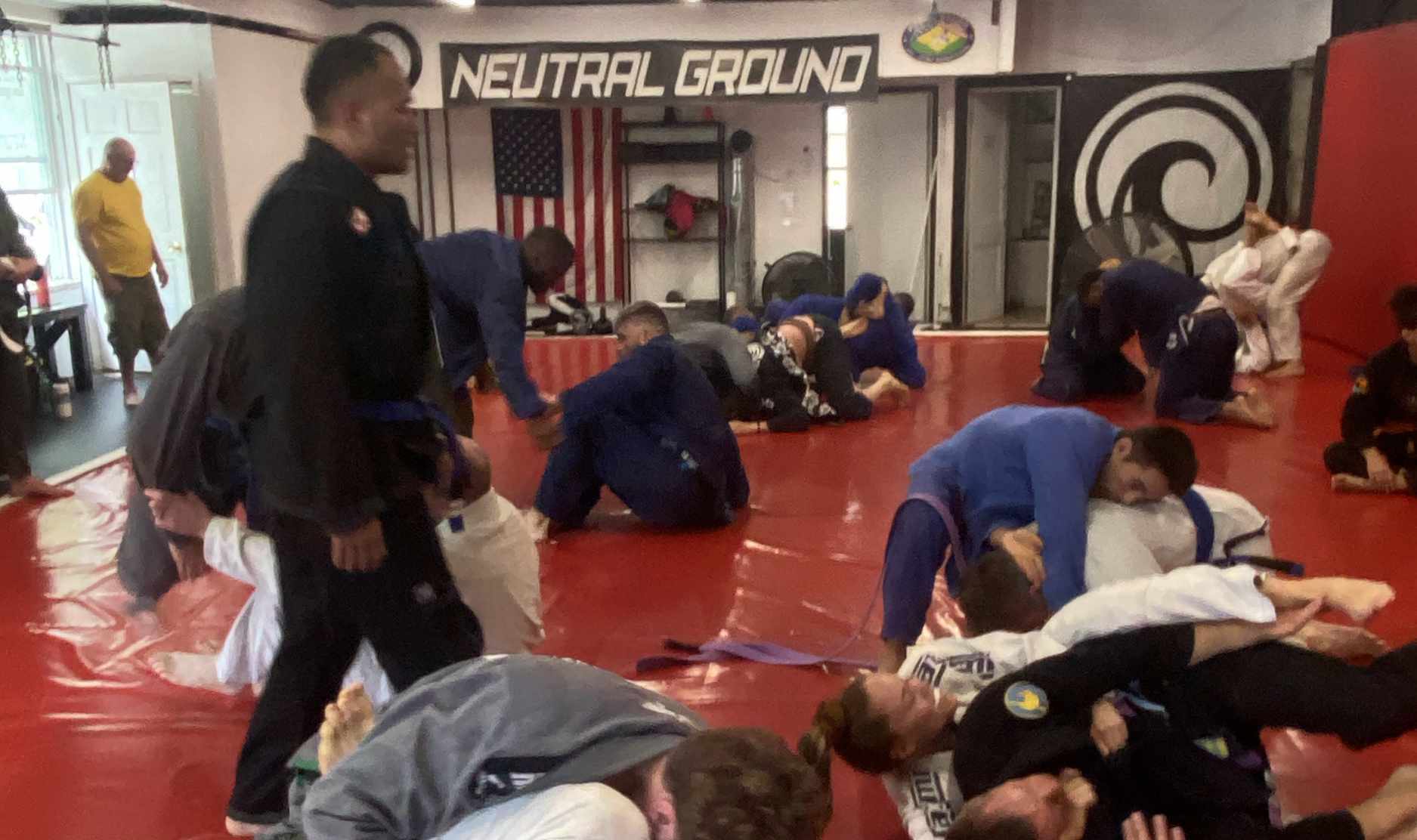We can look at our arsenal of techniques as a forest of infinitely diverse growth potential. Each tree, bird and bear a new technique. No plant or animal is better than another, each is absolutely perfect where it is, when it is, and with it’s combination of others that it exists beside. This is the same for each individual technique, it’s mechanics, timing and synergy with others.
Americana is not better than kimura, and triangle isn’t better than oma plata. Each is perfect where and when they belong, and in proximity and pairing of its connecting techniques. Knowing where and when each technique should be employed relies on loosening your convictions that the few techniques you have in your arsenal are all that’s needed. As a forest is more than just it’s most distinguishing trees.
If we’re vulnerable in narrowing the windows in which we use our “go-to” movements, our transitions are less strained, there’ll be less forcing of imperfectly placed or timed techniques, and we flow gentler, more seamlessly between them.
As we fill the less than ideal spaces of the old technique windows with smaller, more appropriate ones, each technique grows into the next. More perfect options in place of just one option for a wide range of opportunities. Just as there are many options for tree species to provide shade cover for a wide range of other plants or animals in the forest, there are more perfect ones that may include better erosion control or providing soil nutrients specific to other species, at different times and seasons through the years.
Each different plant, animal or technique becomes more perfect as we limit it’s role in our forest or grappling arsenal.
There’s an irony here, as you add more techniques between the base techniques. Instead of going from multiple technique’s success or failure with dead time in between, our rolls will look as if it’s entirety was just one technique. The bumps in the rolling road are smoothed.
As a newer player we can see an entire match or training session as one long and complicated technique, or see simple techniques that apply everywhere, or complex techniques we’re not ready for or physically capable of. We see a forest from the outside.
More experienced players see the infinitely specific mini choices of technique throughout, and the most complex movements as a series of well placed super simple and synergistic basics. We see the leaves and spiders from within.
Our job is to first learn these super basics that rule the world, and keep learning them on rotation until it seems you have somewhat of an answer to whatever position you find yourself. Walk through the forest with these and pay attention.
Then, analyze each of these technical answers to see where else you can apply them. Are there other positions you can hit this from? Where else could each specific tree survive besides where you found it? Where else can i hit x-choke from?
The next step is tricky: to constrict when and where you apply them. In the last step we expanded the number of places we can hit that technique from, but now we’re suggesting narrowing the windows of execution at each of those opportunities. But how far back do we trim the window? On one end, when do we not even attempt it, and the other end, when do we cut our losses? The answer is anywhere it doesn’t feel easy, landing in your lap. If it isn’t graceful, it’s disgraceful, and if it isn’t clean, it’s mean.
Next, with the narrower window in which you’re applying these initial techniques you’re also looking for the new ones that can fill the new gaps you’ve created in your previous technical window constrictions. What other plants could use the shade of these trees? And how could the new plants strengthen the big tree? When does switching from triangle to omaplata seem most seamless and symbiotically paired? What tree or other plant or animal lives best near a birch tree?
Step by step, we learn generally, narrow specifically, fill the gaps, and repeat. Our technical forest becomes strong through it’s diversity and connection. Each technique, with it’s narrower window of execution, depends less and less on pure will and more on it’s connection to it’s neighboring techniques. Answers to technical questions become less absolute as each depends more heavily on the other previously unknown or brushed over variables surrounding it.
Where are we on the path of our last technique or the one we’ll learn today? Learning it initially? Expanding it’s application? Constricting it’s use? Or gap-filling? Where does it fit today in our technical forest?

